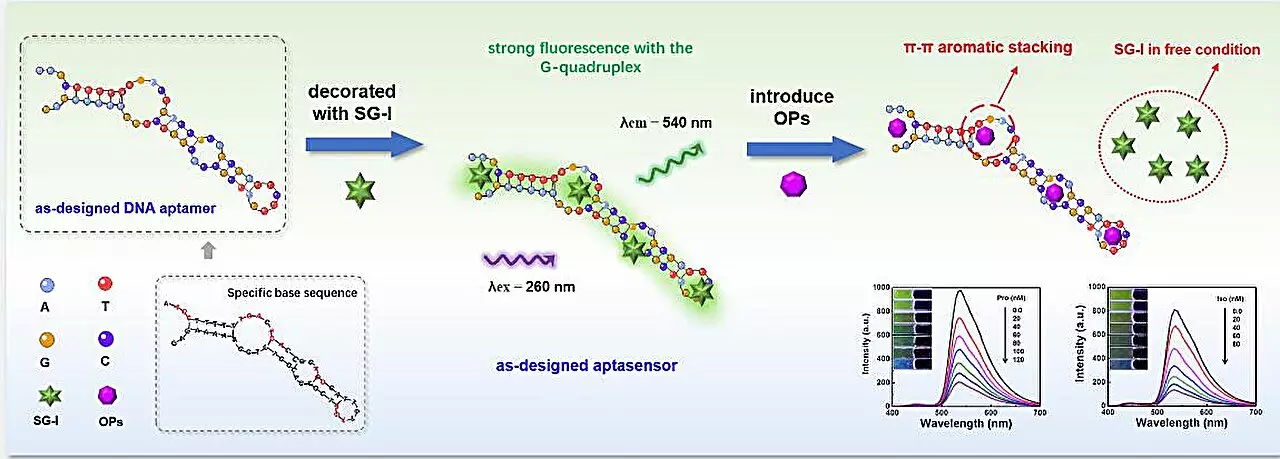In a notable initiative from the Hefei Institutes of Physical Science, researchers under the guidance of Prof. Jiang Changlong have unveiled an ingenious advancement in the quest for safer agricultural practices. Their newly developed visual sensing platform leverages a DNA aptamer-based system, enabling rapid and precise identification of harmful organophosphate insecticides, specifically profenofos and isocarbophos. These pesticides, while effective in pest management, raise pressing concerns due to their propensity to leave toxic residues that threaten both human health and environmental integrity.
The Toxicity Challenge of Organophosphate Insecticides
Organophosphate insecticides have been a staple in agriculture due to their potency against a broad spectrum of pests. However, the dark side of such widespread usage is the accumulation of chemical residues, which pose serious health risks, including neurotoxicity and potential carcinogenic effects in humans. As agricultural practices evolve, the need for robust detection methods that can keep pace with these challenges becomes increasingly urgent. Current technologies, often cumbersome and inefficient, fall short in providing the rapid and on-site analysis that is necessary for effective health and safety monitoring.
Innovative Mechanism: The Role of DNA Aptamers
The new sensor, described in the journal *Analytical Chemistry*, operates through a fascinating mechanism involving engineered DNA strands known as aptamers. These aptamers are designed to specifically bind with organophosphate molecules. The core of this technology lies in the sensor’s ability to visually indicate the presence of these insecticides through a vibrant color change. Initially, the sensor glows green, aided by a special dye embedded in a G-quadruplex structure. When organophosphate insecticides are present, they occupy the aptamers, thwarting the green fluorescence and instead enhancing blue fluorescence. This shift from green to blue not only signifies contamination but does so in a manner that is clear and immediate, creating a user-friendly detection experience even in the field.
Portable Technology Meets Consumer Accessibility
The fusion of cutting-edge DNA technology and innovative design doesn’t stop at colorimetric detection. The research team has extended their vision by incorporating 3D printing techniques to create a portable platform that can be easily utilized in various environments. Furthermore, by integrating a color-identifying application with smartphone technology, this system becomes accessible to the average consumer. Imagine farmers and food safety inspectors alike equipped with a simple device, enabling them to conduct real-time assessments without the need for extensive laboratory setups. This level of accessibility could democratize food safety, allowing for proactive measures against pesticide contamination.
A New Era in Food Safety
Prof. Jiang’s remarks underscore a pivotal shift towards more efficient, non-intrusive detection methods that align with modern environmental needs. The realization of this visual sensing platform isn’t just an academic achievement; it illustrates a proactive approach to global food safety dilemmas. By facilitating immediate, on-site detection of pesticide residues, this technology holds the potential to significantly curtail the health risks associated with pesticide exposure. As we move into an era where environmental awareness is intertwined with consumer choice, innovations like these will be vital in ensuring the safety and integrity of the food supply chain.

